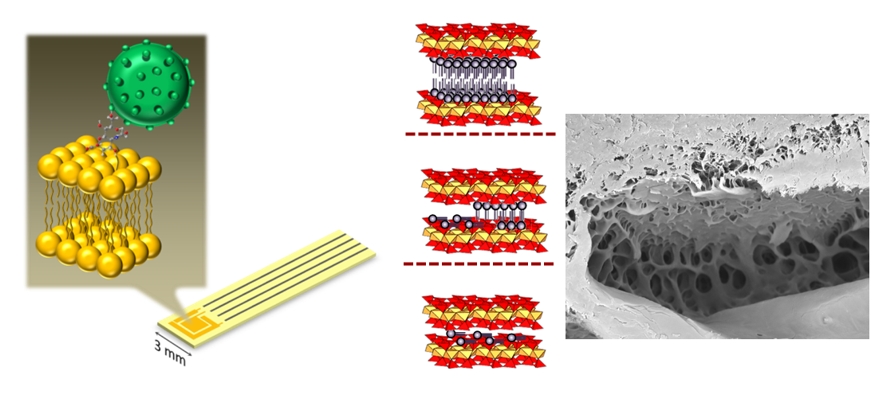Ir al contenido

Biohybrid materials
Biohybrid systems are developed from the combination of molecular or polymeric species of biological origin and inorganic solids (silicates, layered double hydroxides, perovskites…). Among them, biohybrids involving phospholipid molecules and bionanocomposites based on polysaccharides (chitosan, alginate, cellulose derivatives…) and structural or storage proteins (gelatin and zein) have been developed. The main applications of these nanomaterials focus on biomedicine as promising tissue engineering nanomaterials, new biosensors for the detection of glucose, cholesterol, etc, and rapid determination of virus phenotypes, biomimetic membranes and other nanomaterials for DNA and drug-delivery systems, support of viruses and new efficient adjuvants of vaccines (Influenza and HIV). Another group of applications of these biohybrids are bionanocomposites for food packaging (green nanocomposites conformed as films), thermal and acoustic insulators (ultra-lightweight foams), and environmental remediation: bionanocomposites for selective adsorption of pesticides, heavy metals and rare-earth elements in water.
